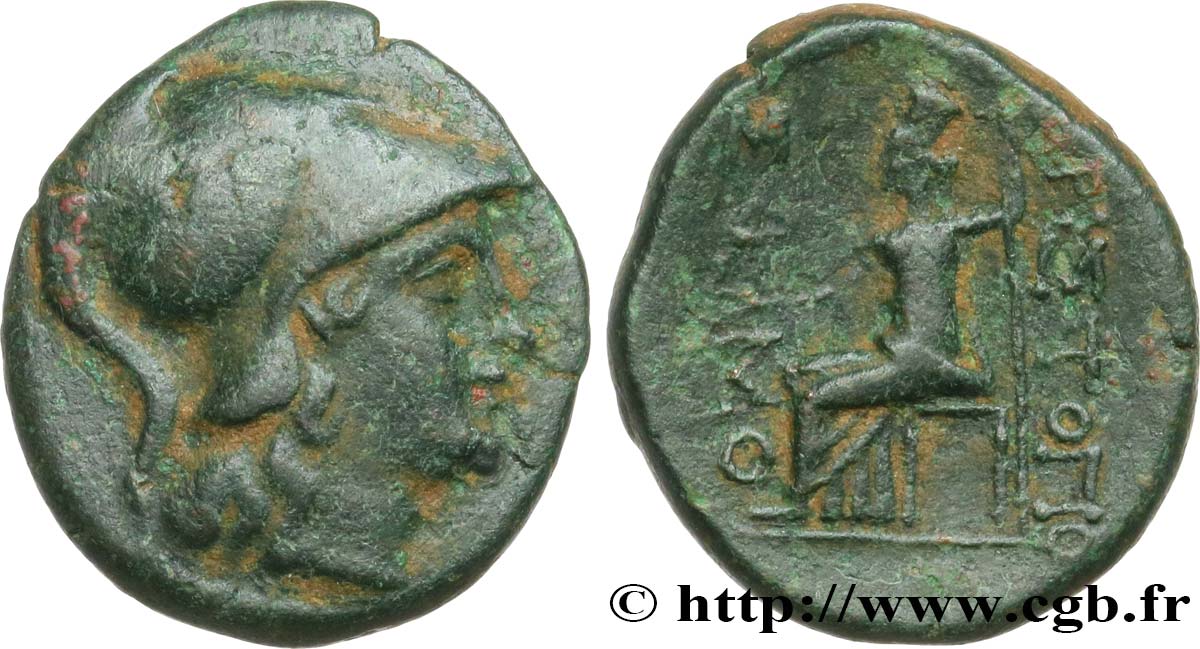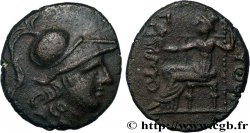bgr_529296 - THRACE - THRACIAN ISLANDS - SAMOTHRACE Unité
Not available.
Item sold on our e-shop (2019)
Price : 195.00 €
Item sold on our e-shop (2019)
Price : 195.00 €
Type : Unité
Date: c. 200 AC.
Mint name / Town : Thrace, Samothrace
Metal : copper
Diameter : 20 mm
Orientation dies : 12 h.
Weight : 5,37 g.
Rarity : R1
Coments on the condition:
Exemplaire sur un flan ovale bien centré. Belle tête d’Athéna. Frappe un peu molle au revers. Jolie patine verte
Catalogue references :
Obverse
Obverse legend : ANÉPIGRAPHE.
Obverse description : Buste d’Athéna (Minerve) casquée et drapée à droite, coiffée du casque corinthien.
Reverse
Reverse description : Cybèle (la Grande mère) tourélée, drapée assise à gauche, tenant une phiale (patère) de la main droite et un long sceptre de la main gauche.
Reverse legend : SA-MO/ ARISTOPO.
Reverse translation : (Samos/ Aristopo).
Commentary
Sur notre exemplaire la fin du nom du magistrat n’est pas visible comme sur de nombreux exemplaires. C’est la deuxième fois que nous présentons une pièce de Samothrace. Le nom de ce magistrat ne semble pas connu.








 Report a mistake
Report a mistake Print the page
Print the page Share my selection
Share my selection Ask a question
Ask a question Consign / sell
Consign / sell
 Full data
Full data